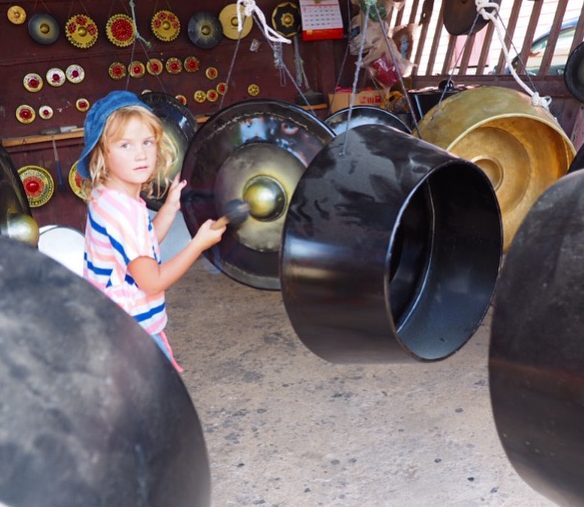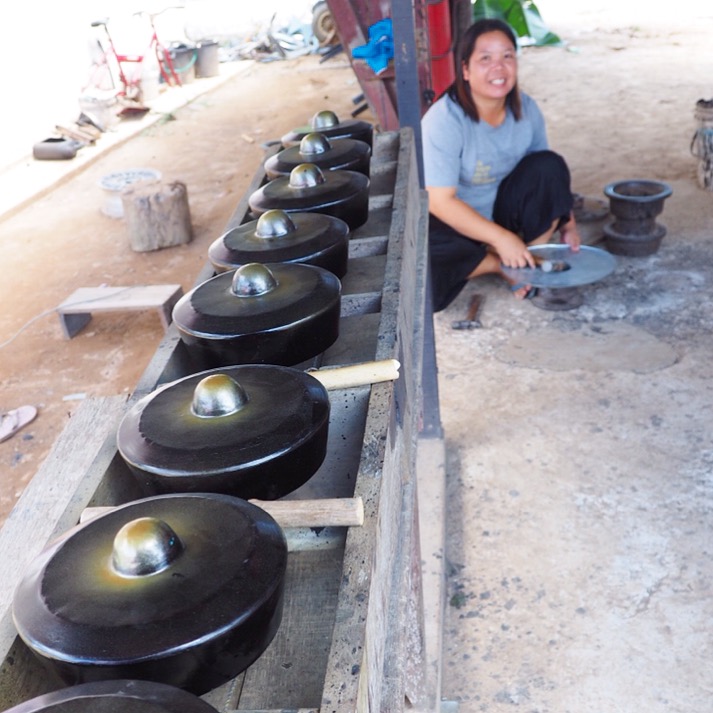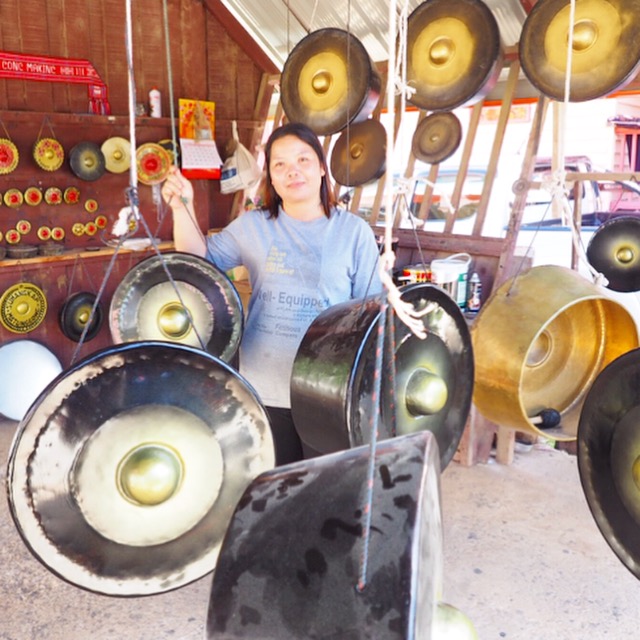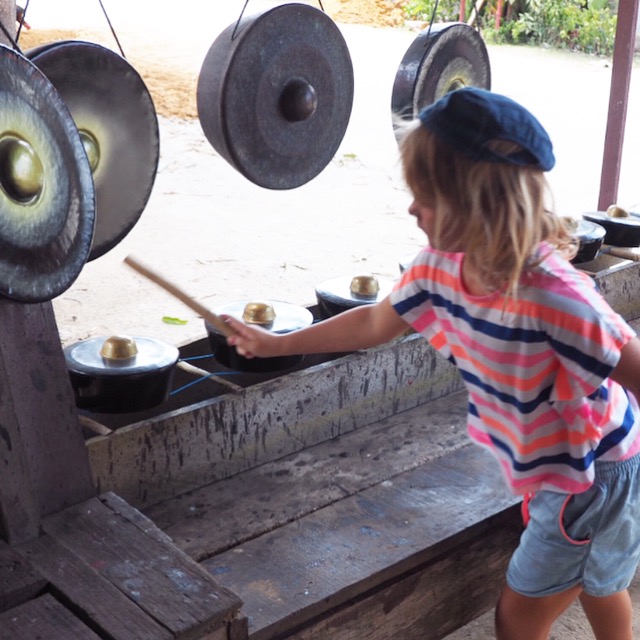There is so much for families when you visit Borneo, and amazing towns for kids to learn about daily life, traditional tribes and communities and the skills that each tribe has and shares with the rest of the island.
As we drive along winding roads through the mountains, jungles, and palm oil plantations of Sabah, our guide, Sly, gives us a quick intro to each town we pass.
“This village produces all the sweet corn for Sabah.”
“This is the village that grows Sabah’s rice.”
“This village has horses.”
“These villagers are farmers and some are sea gypsies.”
It is fascinating that every village has a purpose, working together to deliver a benefit to its community and often to the people of Sabah through producing food and other goods.
“This is the village that makes the gongs.”
Kampung Sumangkap is about two and a half hours north of Kota Kinabalu and just an hour before the Tip of Borneo, so if you’re driving to the Tip it’s a great place to stop. You can read about our stay at the Tip of Borneo here.

Emmie having a go at playing the gongs
My favourite village! Kampung Sumangkap is the Rungus village that makes Malaysian Borneo’s gongs. Yes gongs! Important for tribal music and celebrations and a tradition centuries old. The first gongs were brought to Sabah on trading ships from China back in the tribal days.
The Chinese people taught this Sabahan village to make the gongs and now they pass their skills down generation to generation, not only making the gongs but tuning them by ear. Their gongs are sold all over Malaysian Borneo but mostly to the Iban tribe of Sarawak.

Salina – a Sabahan gong maker for 12 years
We enter the village and meet Salina, sitting in her worship, hammering a small dome into the centre of a thick round piece of tin. This ‘lid’ is then attached to a circular base, similar to a round cake tin, with a small dome in the centre. This dome is hit with a soft mallet, and it is the top that makes the sound.
Salina sells her sets of gongs to the Iban tribe in Sarawak, and sells five or six sets per month, earning a good wage from the sales.
Each set of gongs includes one Kulintangin – a group of eight small goings set upright into a waist high wooden platform – and two standard sized gongs, which we find hanging from the roof.

The Kulintangin take one week to make and each standard gong three days.
Back in the day the gongs were made in one piece from brass, but now they are made from two pieces of tin, welded together.
“It’s been this way for 12 years now’, says Salina. “The goings made from brass in one piece were beautiful but would take me one week to make each piece, and with tin I can do that in three days.”
Gongs are tuned by ear, by hitting the flat top with the mallet to create and indent and slight curve. As the shape changes the gong is tested by its maker until they get the sounds and pitch they want.

There are 20 families in the village, all making gongs from their government supplied workshops. Before the government built the workshops in 1998, they would sit under trees and make the goings.
“Now it is good”, says Salina. “We have shade, it is cooler and we stay dry in the rain.”
More than three generations of going makers have lived in this village. producing gongs and making a good living. Selina followed her father into the gong making business.
She has been crafting gongs for 12 years, and her father made gongs all his life. The skill is passed from generation to generation but not everyone gets the talent to consistently produce a quality gong. Of Salina’s father’s six children “only three got the talent”. The next generation is quickly growing up – will they still be keen to stay in the village and continue the family business?

“I don’t know,” says Salina. “The kids aren’t really interested but they are still young. My son isn’t interested in the gongs but he does love music, especially traditional guitar. Most teenagers want to go away to study. I hope they will stay and continue our gong making.”
Read about Zulah the machete maker and what it’s like to live in a longhouse in Borneo.

